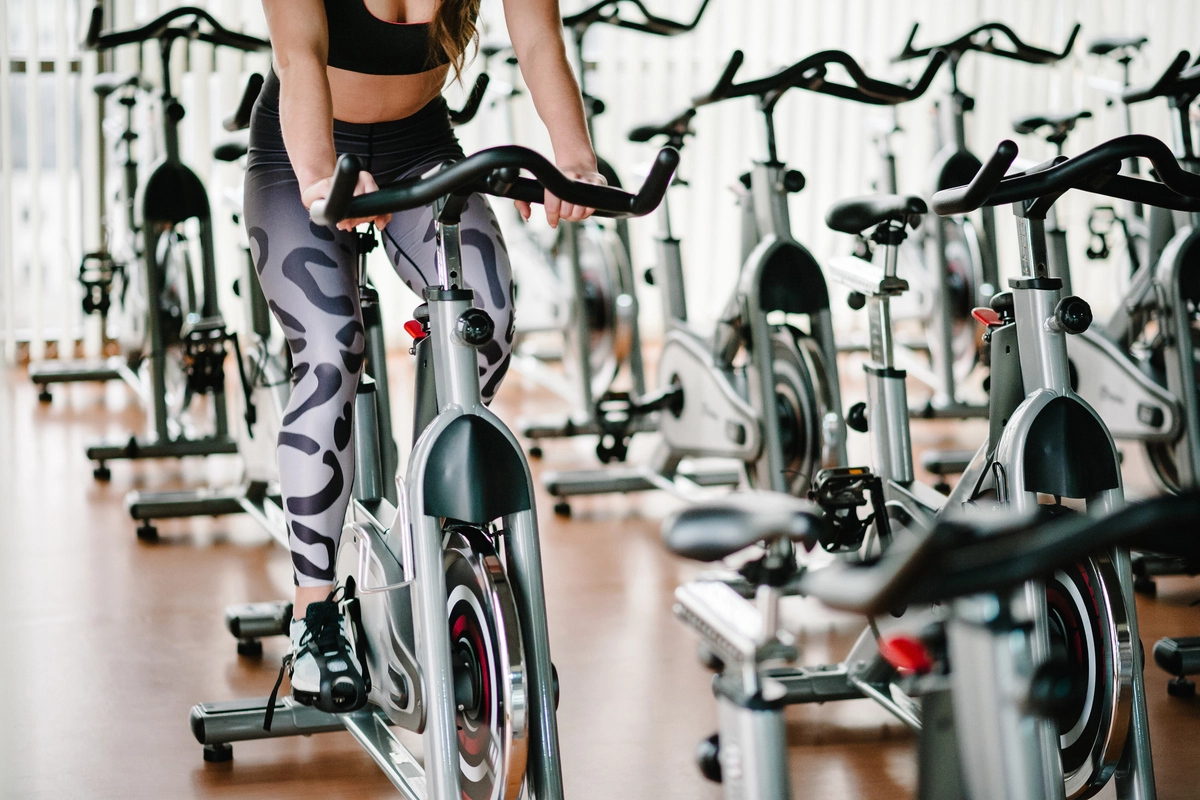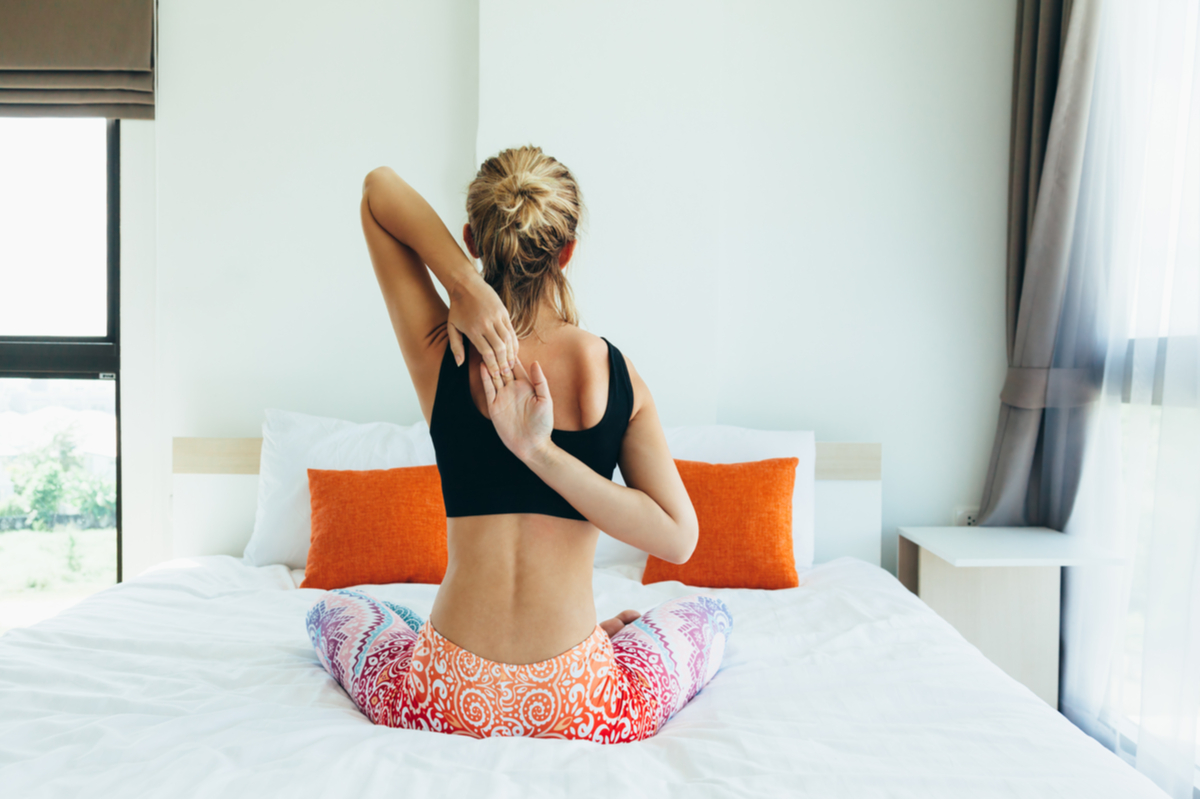It can seem like there are hundreds of different types of yoga to choose from, everything from puppy yoga to aerial yoga to Broga, yoga for bros (I’ve done them all and recommend all three). But the two most common types of yoga you’ll come across are Hatha yoga and Vinyasa yoga. And while there’s no official rules or requirements as to what teachers need to include in order to qualify as a Hatha or Vinyasa yoga class, they each tend to follow a certain style.
What is Hatha yoga?
Hatha yoga is something of a generic term for yoga, so there’s likely to be a fair amount of variation from class to class. However, in most cases it’s usually a slower, more mindful form of yoga class in which your teacher guides you through poses that you might hold for longer in order to improve your strength and flexibility.
As in all yoga classes, there’s a strong focus on your breath in Hatha yoga. You’ll often be encouraged to breathe into poses allowing you to relax more and get a deeper stretch, or hold a pose for several breaths before moving on to the next one.
The main benefits of Hatha yoga
In addition to all the benefits associated with any form of regular exercise, Hatha yoga has been found to have a number of significant benefits, including:
- Stress reduction
- Improved flexibility
- Increased core strength
- Even reduction of symptoms of depression
What is Vinyasa yoga?
Vinyasa yoga is usually a more dynamic practice in which your teacher guides you smoothly from one pose to the next in a range of different sequences. You might have also seen it called Vinyasa flow yoga because of how you’ll flow from one pose to the next throughout the class.
The exact order of poses and sequences is up to the individual teacher, so don’t expect it to be the same week to week or class to class.
You may also have seen it called Ashtanga yoga which is also a Vinyasa yoga class, however, Ashtanga follows a set series of poses and sequences every single time. As a standardized class you can join an Ashtanga class anywhere in the world and follow the same sequence each time.
Vinyasa yoga is a fast-paced class, connecting each movement to the breath, inhaling into one pose and then exhaling into the next. So you’re kept moving throughout the class, with breaks or rests typically involving holding a pose like downward dog – but of course you’re free and encouraged to take a child’s pose whenever you need it.
The main benefits of Vinyasa yoga
Vinyasa yoga is a more active yoga class that requires more energy, so while it can help you to relax and lower stress, some of its more obvious benefits include:
- Improved balance and stability
- Strength and endurance training
- Cardiovascular exercise
Hatha vs Vinyasa yoga
Both yoga classes will start with some form of warm-up, will move you through a sequence of poses, focus on your breath, and then finish with relaxation or meditation. However, the biggest difference between the two is the speed at which you perform the sequence of poses. Hatha yoga tends to focus on slow and deep breathing that you control while holding poses, centering your breath in order to strengthen both the mind and body.
So you might move into a pose and hold it for a set number of breaths before moving on to the next one. In contrast, Vinyasa yoga links a sequence of poses to the breath, moving from one pose to the next quite quickly as you breathe normally. This will get your heartrate up and get you sweating more than a Hatha yoga class might.
The more active nature of a Vinyasa yoga class lends itself better to more physical goals. So if your goal is to move more, burn calories, or build muscle, the constant moving and building of sequences in a Vinyasa class would be more beneficial.
If your goals are more mental than physical and you like the idea of attending a slow-paced yoga class to help with relaxation, then you’d be better to opt for a Hatha yoga class. Hatha yoga is also often a good choice for those new to yoga. The slower pace and the focus on holding and improving each pose is a great way to introduce yourself to the practice and get more comfortable with poses, names and yoga concepts.
Finally, while both Hatha and Vinyasa yoga will work to improve your flexibility, you might prefer one over the other based on your current levels of mobility. So again, if you’re new to the practice or have fairly limited mobility and flexibility, a Hatha yoga class might be more suitable so that you can take your time in each stretch. By breathing into those stretches and holding those poses for longer you can get more familiar with how your body should feel and relax into the pose so that you’re not holding as much tension and your muscles can gradually lengthen.
If you’re fairly active and already have fairly decent mobility, the dynamic movement of a Vinyasa yoga class is a great way to continue to practice and improve your flexibility week after week.
Which type of yoga is better for you: Hatha yoga or Vinyasa yoga?
The boring answer is they’re both good for you. Both are a form of mindful exercise that place a great deal of emphasis on practicing good form and exercising with intention. In my own experience, I’ve found that those who prefer one or the other have different requirements from their time in the gym or in the studio.
As someone who sits at a desk all day and has a fairly quiet lifestyle, I find it hard to relax and unwind in a similarly quiet environment. Therefore I prefer the movement and physical challenge of a Vinyasa yoga class more. But if you’re someone who has a physically active job or a busy, hectic lifestyle, the calm and quiet you get from an hour of Hatha yoga might be just what you’re looking for.






Hatha also focuses on finding the opposing forces in a pose. Think grounding with your low body and lifting up with your upper body in warrior two. Also the upward lift in your front body and downward in you back body in mountain. Vinyasa is more dynamic.